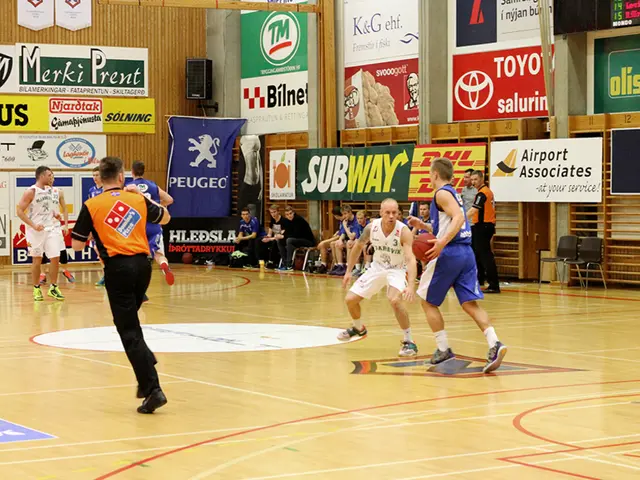Manchester City watches apprehensively as Chelsea faces potential additional injury disruptions, with Rodri's issue being a recurring worry
The Rising Concern Over Player Workload and Injury Risk in Professional Football
The world of football is currently grappling with a pressing issue: the excessive fixtures and competitions that elite-level players are expected to endure. Despite the advanced recovery facilities at clubs like Chelsea and Manchester City, the risk of injury remains high, as demonstrated by the recent injury sustained by Levi Colwill.
Colwill, a central defender for Chelsea, is set to miss the majority of the 2025-26 season after suffering an anterior cruciate ligament rupture. The injury is believed to be a result of playing too much football, with contributing factors including long-haul international travel, inadequate rest, and recovery time.
The timeline of events leading up to Colwill's injury is telling. Between the final whistle of England's match against Senegal and the kick-off of the FIFA Club World Cup opener in Atlanta, there were roughly 140 hours. Ten of those hours were spent in the air, and for just under half of the remaining time, Colwill would have slept. The injury also sidelined Tottenham Hotspur's James Maddison for several months.
Colwill played 90 minutes or more on five occasions over the next four weeks, often in difficult conditions out in the US, after a full calendar of domestic and international football with Chelsea and England. This heavy workload, combined with international travel, has raised concerns about the physical toll on players.
Various figures in the footballing world have called for a reduction in the number of competitions and fixtures that elite-level players are expected to fulfill. Marcelo Bielsa and Jurgen Klopp, among others, have spoken openly about the need to protect players and the product itself.
The Impact of Workload and International Travel on Injury Risk
Research has shown that high workload, including the number of games played, total distance covered, sprints, and physical collisions, directly correlates with fatigue and overuse injuries. Playing more than 60 matches annually, as raised by players like Rodri, increases susceptibility to both short-term and long-term injuries, including severe cases like ACL tears.
International travel exacerbates fatigue through disrupted recovery routines, time zone changes, and increased physical and psychological stress, further raising injury probability. Sports analytics now enable teams to closely monitor such workloads by tracking physical metrics and biomechanical patterns, helping identify injury risk factors and fatigue levels to optimize training and resting schedules.
Proposed Measures to Reduce Injury Risk
To mitigate these risks, there are ongoing proposals to reduce the number of competitions and fixtures elite players must fulfill. Organizations like FIFPRO, through initiatives such as Project ACL, are researching how the professional environment—including fixture congestion and travel—impacts injury risk, aiming to inform policy changes on scheduling and player workload management.
Enhanced load management approaches increasingly utilize data-driven insights to rotate players more effectively and tailor individual training and rehabilitation programs, further protecting players. Calls from players’ unions and experts support restructuring the football calendar to prioritize quality over quantity, ensuring adequate rest periods between games and limiting unnecessary tournaments.
In summary, the combination of heavy playing loads and international travel elevates injury risks in professional football, prompting research-backed efforts and proposals to reduce fixture congestion, limit the number of competitions, and apply advanced workload monitoring to safeguard player health and prolong careers.
Player workload and international travel have a significant impact on injury risk in football, particularly in high-pressure leagues such as the Premier League. Research indicates that excessive games, total distance covered, sprints, and physical collisions, coupled with international travel, can increase the likelihood of both short-term and long-term injuries, including severe ones like ACL tears. Thus, there's a growing call for a reduction in the number of competitions and fixtures in European leagues, including the Premier League, to protect players and ensure a product of high quality.





